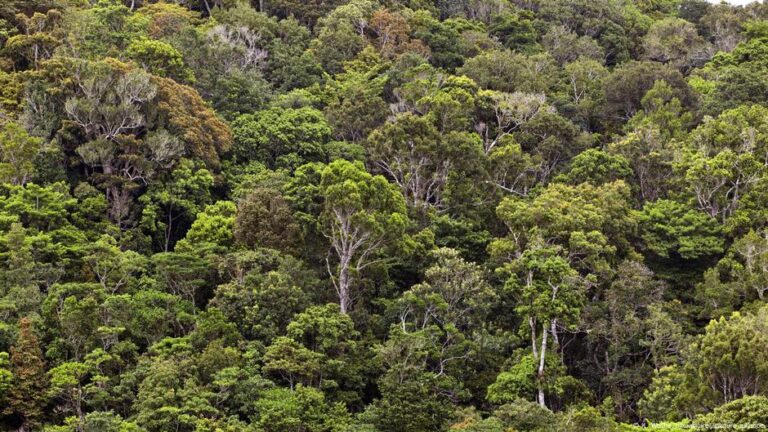A new study has discovered that trees contain a rich and diverse microbiome inside their tree trunks, much like humans do in our bodies.
An average tree contains approximately 1 trillion microbe cells, according to data acquired from sampling the DNA of 150 trees which waspublished in the journal Nature.
It found that healthy trees contain distinct microbiomes specialized to different parts of the tree and are rich in fungi, bacteria, and viruses. The authors believe these could play a vital role in tree health.
“Our study shows that each tree species hosts its own distinct microbial community that has evolved alongside the tree,” said study co-author Jon Gewirtzman at Yale University, US.
Katie Field, a plant biologist at Sheffield University, UK, who was not involved in the research, said the study “helps redefine how we see trees — not just as standalone organisms, but as complex, integrated ecosystems that include a vast network of microbial life.”
“In the same way that human microbiomes are important for our health, this work suggests we may need to start thinking similarly about trees. It opens a whole new frontier for environmental microbiology, forest science, and even biotechnology,” Field told DW.
1 trillion microbes per tree
Microbes are an important part of plant life. The discovery of a ‘wood-wide web’ — a network that connects fungal filaments and tree roots in underground soil — led to the idea that other organisms aid plant growth and defense against pathogens.
But little is known about the microbes living inside healthy wood.
“The 3 trillion trees on Earth represent the world’s largest pool of biomass, much of which hosts unique ecosystems we’ve never studied,” said Gewirtzman.
The researchers set out to study the microbiomes of trees in the Yale-Myers Forest in Connecticut, US. They took multiple samples from 150 trees across 16 species, including oaks, maples, and pines.
Soil samples were also taken.
They then extracted DNA from the wood and soil and analyzed the data for evidence of DNA from bacteria, fungi, and viruses.
They found that trees contain huge numbers of different microbe species — roughly one microbe for every 20 plant cells.
This translates to between 100 billion and 1 trillion microbial cells on average, which is still far fewer than the 39 trillion inside humans.
“This study provides some of the clearest evidence to date that the wood of living trees hosts distinct and adapted microbiomes, different to those of the surrounding soil, leaves, or tree roots,” said Field.
Wood microbiomes are specialized
Microbes weren’t equally distributed through the tree — specialized microbial communities existed in different parts of wood.
The inner heartwood and outer sapwood contained completely different microbial communities. Denser heartwood was dominated by microbes that don’t need oxygen, while the sapwood contained more oxygen-requiring microbes.
Different microbiomes were also found in different tree species. Maple trees, for example, contained a high abundance of microbes that are adept at breaking down sugars.
Further experiments showed that different communities changed gas concentrations inside these woods.
Do tree microbiomes affect forest health?
Whether these specialized microbiomes affect the health of their tree hosts is unclear. More studies are needed to understand how microbiomes affect wider forest health, but the authors believe there is a link.
“We know that certain microbes promote growth in certain model plants, including in major cereal crops and poplar trees, but there are thousands [of microbes] that we do not know the function of,” Gewirtzman told DW via email.
The study may also open new questions. For Field, this includes investigating the roles microbiomes play in tree aging, defense and decay.
“There is also clear potential to explore whether managing or modifying wood microbiomes could help improve forest resilience or carbon cycling,” said Field.
Gewirtzman suggests it could also answer big picture questions about how climate change impacts trees, or whether tree microbiomes could be deployed for other purposes.
“How will climate change affect these internal ecosystems and forest health? And can we harness these microbes for new forest management or biotechnology applications?”
But Michael Köhler, a botanist at Martin Luther University Halle-Wittenberg, Germany, told DW it’s far too early for Gewirtzman’s group to start monitoring tree microbiomes to measure climate impacts and forest health.
“We’re investigating this at the moment — how climate change is affecting the microbiome of seeds and seedlings in grasslands,” he told DW.
Edited by: MW Agius


